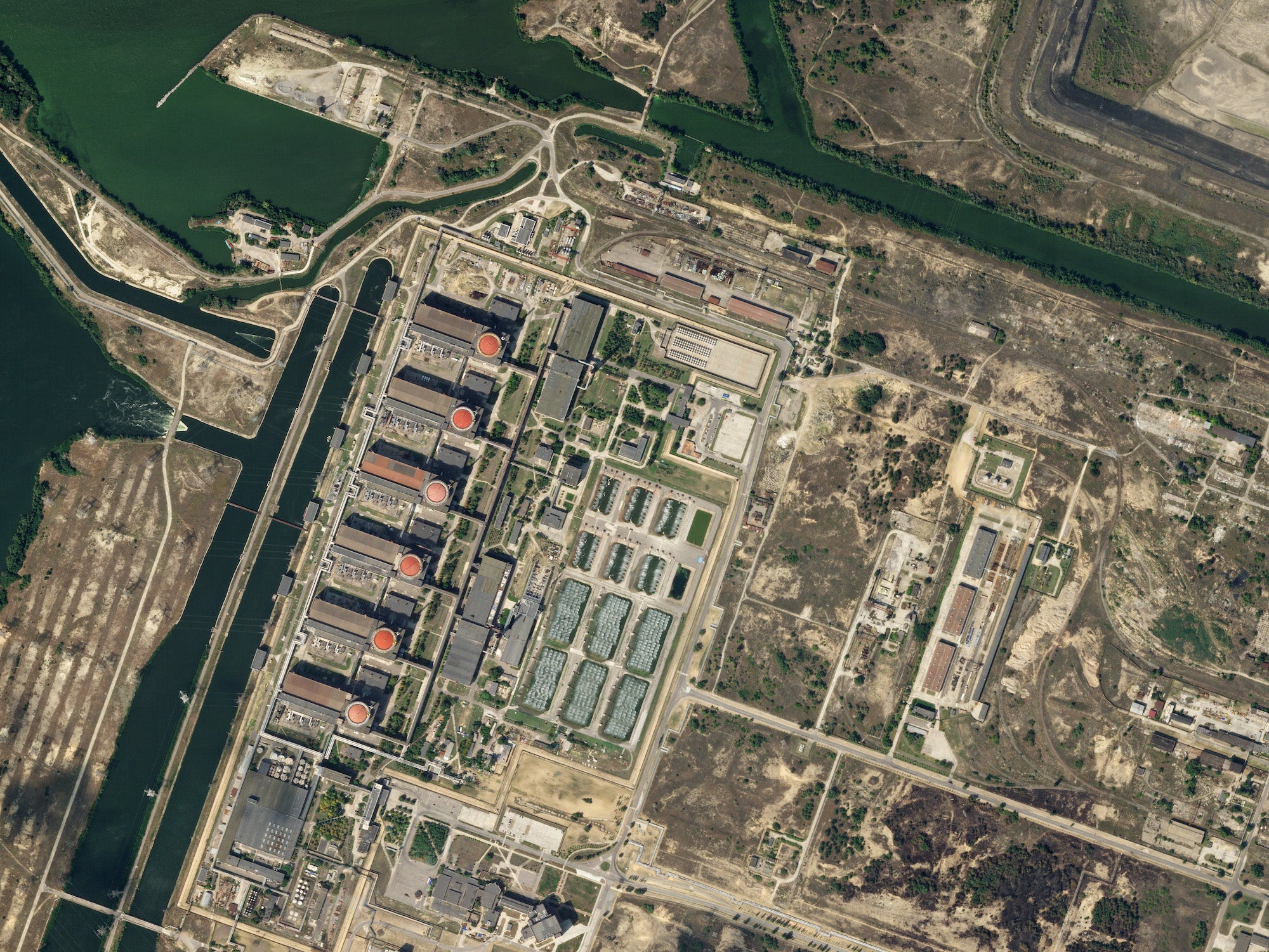
Daily News | Online News
Some 155 miles from the Zaporizhzhia Nuclear Power Plant in Ukraine is another atomic facility: the South Ukraine Nuclear Power Plant. Not long after midnight on Monday, what the International Atomic Energy Agency (IAEA) described as “shelling” resulted in a blast near that second plant. The New York Times referred to the strike as being carried out by a “powerful Russian missile.”
That projectile and explosion occurred some 984 feet, or about 300 meters, from the South Ukraine Nuclear Power Plant “industrial site,” the IAEA said. The event temporarily disconnected three power lines and broke windows nearby.
Meanwhile, the Zaporizhzhia plant continues to be in the news, mostly in regards to the status of its connection with the external power grid. Below is a brief update with what’s been happening with the two plants, and what the stakes are.
The South Ukraine NPP
This power plant has three reactors, which continue “to operate normally,” the IAEA said Monday, following that nearby strike and explosion.
But of course, a military strike near a nuclear power plant is hazardous for a number of reasons. Nuclear reactors, where the actual fission process takes place and creates heat, are strongly reinforced to withstand impact. Nonetheless, “the concern would be that it would breach the concrete containment vessel,” observes Cheryl Rofer, a nuclear scientist who formerly worked at Los Alamos National Laboratory, if a more direct strike were to occur.
Regardless of the strength of these containment vessels, ordinance hitting a nuclear power plant could still have serious follow-on effects. “The basic reactor structure—the steel containment vessel, and everything that’s inside of it—is probably pretty robust and pretty safe,” she says. “But if you think about connections and electronic equipment that runs everything, you’re starting to get into a little more delicate set of things.”
“Most of those things are not tested against missile strikes,” she adds, which makes it hard to know what the effects of a more direct hit would be.
[Related: Why do nuclear power plants need electricity to stay safe?]
And another hazard lurks at plants: Spent fuel rods reside in cooling pools after they’re done with their work in the reactor, but before they go into more permanent storage.
“If they really wanted to make a radioactive mess, they could just aim at the spent fuel pools,” she observes. But that doesn’t appear to be Russia’s goal. “The hits are on the electrical connections, so they’re playing this game of, ‘we want to scare you guys in the West.’”
But it’s a dangerous game. For one, taking out the electric connections themselves “can lead to a catastrophe,” she says. All nuclear reactors require cooling systems, and an interruption to those could lead to a meltdown.
“Mistakes happen, and at some point they could do something that would be worse—offhand, that would be hitting the spent fuel pools,” she adds.
The Times reports that Petro Kotin, the chief of Ukraine’s nuclear power company, Energoatom, referred to the attack as “nuclear terrorism” on television.
The Zaporizhzhia NPP
The Zaporizhzhia nuclear plant’s six reactors are now completely shut off, meaning that it’s not making electricity. However, nuclear plants need a supply of electricity, even when those reactors are shut down, to power its systems—here’s more on how they work.
While that plant had been getting power from a reserve line, that power line was recently “disconnected,” the IAEA said. Fortunately, Zaporizhzhia still has power from a newly-connected different line, meaning that it lost one connection not long after gaining another.
“The situation at the Zaporizhzhya Nuclear Power Plant remains fragile and precarious,” Rafael Mariano Grossi, the director general of the IAEA, said in a statement. “Last week, we saw some improvements regarding its power supplies, but today we were informed about a new setback in this regard. The plant is located in the middle of a war zone, and its power status is far from safe and secure.”
Rofer has a similar reflection, saying: “My bottom-line message is: Russia, stop shelling nuclear plants and get out of Ukraine.”

0 Comments :
Post a Comment